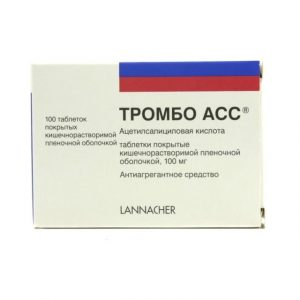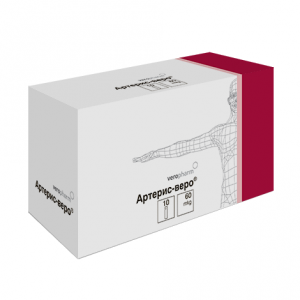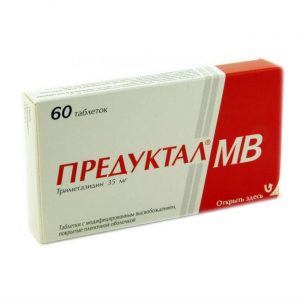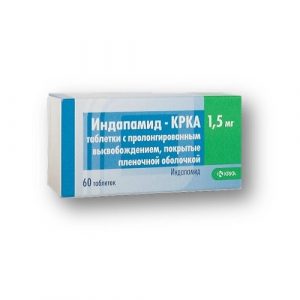Description
Release form
Film-coated tablets.
Pharmacological action
Venarus ® has an angioprotective and venotonic effect. Reduces the extensibility of veins, increases their tone and reduces venous congestion, reduces permeability, fragility of capillaries and increases their resistance improves microcirculation and lymph flow. With systematic use, it reduces the severity of the clinical manifestations of chronic venous insufficiency of the lower extremities of an organic and functional nature. The optimal dose-effect ratio is observed when taking 1000 mg per day.
Indications
Venarus ® is indicated for the treatment of symptoms of chronic venous diseases (elimination and relief of symptoms).
Therapy for symptoms of venous-lymphatic insufficiency:
– cramps of the lower extremities
– feeling of heaviness and fullness in the legs
– pain
– “tiredness” of the legs.
Therapy for manifestations of venous-lymphatic insufficiency:
– edema of the lower extremities
– trophic changes in the skin and subcutaneous tissue
– venous trophic ulcers.
Symptomatic therapy of acute and chronic hemorrhoids.
Contraindications
Hypersensitivity to the active components or excipients that make up the drug. It is not recommended to take the drug for women during breastfeeding.
Use in pregnancy and lactation
Pregnancy
Animal experiments have not revealed teratogenic effects. To date, there have been no reports of any side effects when using the drug in pregnant women.
Breastfeeding period
Due to the lack of data on the excretion of the drug with breast milk, it is not recommended to take the drug for women during breastfeeding.
Impact on reproductive function
Reproductive toxicity studies have not shown an effect on reproductive function in rats of either sex.
Special instructions
It is recommended that you consult a doctor before taking Venarus ®. In case of exacerbation of hemorrhoids, the administration of Venarus ® does not replace the specific treatment of other anal disorders. The duration of treatment should not exceed the time limit indicated in the section Dosage and administration . In the event that the symptoms do not disappear after the recommended course of therapy, an examination by a proctologist should be performed, who will select further therapy.
In the presence of impaired venous circulation, the maximum treatment effect is ensured by a combination of therapy with a healthy (balanced) lifestyle: it is advisable to avoid long exposure to the sun, prolonged stay on the legs, and it is recommended to reduce excess body weight. Hiking and, in some cases, wearing special stockings helps to improve blood circulation.
Seek medical attention immediately if your condition worsens during treatment or if there is no improvement.
Impact on ability to drive vehicles and mechanisms
Not affected.
Composition
1 tablet contains:
Active ingredients: hesperidin (in terms of 100% substance) 100 mg, diosmin (in terms of 100% substance) 900 mg
Excipients: microcrystalline cellulose 124 mg, sodium carboxymethyl starch (sodium starch (sodium starch ) 54 mg, gelatin 62 mg, talc 12 mg, magnesium stearate 8 mg
Coating aids: hypromellose (hydroxypropyl methylcellulose 41.4 mg, macrogol 6000 (polyethylene glycol 6000) 6.76 mg, sodium lauryl sulfate 0.2 mg, magnesium stearate 2.48 mg, titanium dioxide 7.88 mg, iron ox id red 0.6 mg, iron oxide yellow 0.68 mg.
Dosage and Administration
Inside.
The recommended dose for venous-lymphatic insufficiency is 1 tablet per day, preferably in the morning, during meals. The risk on the tablet is intended solely for division in order to facilitate swallowing.
The duration of treatment can be several months (up to 12 months). In case of recurrence of symptoms, on the recommendation of a doctor, the course of treatment can be repeated.
The recommended dose for acute hemorrhoids is 3 tablets per day (1 tablet in the morning, afternoon and evening) for 4 days, then 2 tablets per day (1 tablet in the morning and evening) for the next 3 days.
The recommended dose for chronic hemorrhoids is 1 tablet per day.
Side effects
The frequency of adverse reactions is presented as follows: very often (? 1/10 cases), often (? 1/100 and <1/10 cases), infrequently (? 1/1000 and <1/100 cases) , rarely (? 1/10000 and <1/1000 cases) and very rarely (<1/10000 cases). Unwanted reactions, the frequency of development of which cannot be estimated from the available data, are referred to as frequency unknown . From the central nervous system: rarely – dizziness, headache, general malaise. From the gastrointestinal tract: often – diarrhea, dyspepsia, nausea, vomiting infrequently – incidence of unknown colitis – abdominal pain. From the skin: rarely – rash, itching, urticaria, frequency is unknown – isolated swelling of the face, lips, eyelids, in exceptional cases, angioedema. If any of the adverse reactions listed in the instructions are exacerbated, or if you notice other adverse reactions not listed in the instructions, notify your doctor. Drug Interactions Not observed. Inform your doctor about all medications you take. Overdose Overdose cases not described. If you overdose, seek medical attention immediately. Storage Conditions At a temperature not exceeding 25 ° C. Expiration 3 years. Do not use after the expiry date stated on the package. Active ingredient Hesperidin, Diosmin lekarstvennaja form tablets Appointment Adults Indications Indications hemorrhoids, vascular eye diseases, varicose veins, venous ulcers Obolensky AF Russian




